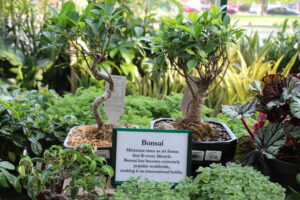Trophy Case Varieties
How confident are you that you’ve chosen the right mix of annuals and vegetables for your customers? What proof do you have that the plants you’ve ordered will actually perform for the home gardener and have them returning for more?
You can recommend the All-America Selections (AAS) Winners with confidence because every single one has been trialed by experts in trial grounds across the country, but you can take that recommendation one step further show your customers the winning varieties as they thrive in an AAS Display Garden at your garden center.
In the following interview with Diane Blazek, executive director of All-America Selections, we discuss the importance of AAS Display Gardens to you and your customers.
Out of the 180 AAS Display Gardens, only four are located at independent garden centers. Why is it important to get that number up?
Diane Blazek: It is only recently that adding independent garden centers as AAS Display Gardens has become part of our strategic direction. Traditionally, public gardens have made up the majority of our Display Gardens, with the thinking that AAS Winners will receive publicity by being grown at a location with a lot of visitors. That still holds true today; but we’d like to take that visibility one step further and actually have them at garden centers (that have room for a display of AAS Winners) to help tell the AAS story and have the product right there, available for sale.
Telling the AAS story and how an entry goes through the process of becoming a winner helps sell that product and, in the end, helps ensure success for the home gardener.
Simply put, why does it make sense to display winning varieties at places that also sell them?
Blazek: Call it impulse buying. If you see a beautiful dahlia at a public garden, how often will the average home gardener actually write down the variety then seek it out at their local garden center? On the other hand, if you see that same beautiful dahlia on display at a garden center, labeled by variety name, with the AAS logo (and hopefully some signage explaining what it takes for a variety to become an AAS Winner), then it’s much easier for that consumer to find and purchase that exact variety for their own garden.
Does selling and displaying AAS varieties add some credibility to an IGC? Can it help with customer confidence?
Blazek: Absolutely! Our tagline says it all: Tested Nationally & Proven Locally. It’s a difficult decision for a retailer to decide which of the thousands of new varieties they will carry. AAS helps that decision process by honing in on the ones that have gone through our trialing process and weeding out the ones that did not perform to our standards.
If the garden center personnel takes the time to read our literature and understand the rigorous testing these winners undergo all over North America, they will understand the story behind the story, which helps them sell confidence to their customers. We also create downloadable signage (found here: www.aaswinners.com/signs_brochures/index.cfm) to help identify the AAS Winners; and all the tag and label companies generously support the AAS program by providing tags with the AAS logo on the appropriate varieties. All totaled, it gives the consumer confidence that if this variety has been trialed and judged by professional horticulturists, then it’s a proven performer.
For those interested, how can an IGC get started on creating an AAS Display Garden?
Blazek: Retailers can contact our office to request an application (contact Macie Zorn at [email protected]). After that, our Board of Directors approves the application; then it’s just a matter of growing and planting the AAS Winners just as a retailer would do for other plants they put on display in order to promote them.
AAS Display Gardens get the seed for the AAS Winners from the past five years. They can choose to be just a flower display garden, just a vegetable display garden or both. For 2013, we will send 11 or more vegetable winners and 18 or more flower/bedding plant winners. We do alert the Display Gardens in October/November as to the exact varieties they’ll receive so they can plan ahead.
There is a fee for the signage, but that’s the only up front cost. We have a listing of all AAS Display Gardens on the AAS website, so after approval, we’ll add the garden center to this list (along with the Google Maps location feature we have there).

Looking for a legitimate way to set your customers up for success? An All-America Selections Display Garden can prove to be a great starting point.

















 Videos
Videos





